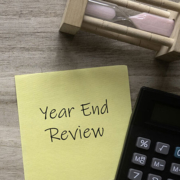How to Align Your Chart of Accounts With Your Business Goals
Planning to grow your business? Learn how you can harness your chart of accounts to guide your path to success with these bookkeeping and controller tips.
To reach your business goals, start at the end. In other words, you need to spell out specifically what your goal is — whether it’s opening a new location or expanding your product line or hitting a particular revenue number — and work backward to create a plan for reaching it. I call it my “bridge theory.” The bridge is the plan that gets you from where you are to where you want to be. To help build that bridge, you can set up your chart of accounts (COA) in a way that both aligns with your goal and provides guideposts that lead you there.
A Bookkeeping Breakdown
Too often, businesses don’t fully capitalize on their opportunities. I recently had a client, for example, whose growing business offered two distinct services, and yet his COA didn’t distinguish one from the other. So all his revenue was recorded in one big bucket, and all his expenses were recorded in another.
The client’s business growth was not as robust as he expected, and he couldn’t figure out why. Despite his success, he wasn’t coming close to his stated goal of doubling his business.
To help steer my client toward that goal, the first thing I did was restructure his COA. I created separate classes for his two different lines, each with its own profit-and-loss statement (P&L).
The results were striking. It quickly became apparent that one side of the business was growing much faster than the other. In order to capitalize on this growth and reach his goal of doubling his business, he would need to invest in his new line of business — investment, including upgrading equipment, is part of the bridge to his goal. Armed with financial documentation, my client got his bank to double his credit line to fund the expansion of the booming side of his business.
Listen to What the Numbers Are Telling You
Aligning your COA to your business goals requires outlining specific goals (for example, increasing revenue in one line of business), then setting up your COA (for example, creating classes for the separate lines of business) so it can capture the data you need to measure your progress. You then work at a granular level to review all of your accounts receivable and accounts payable to classify every dollar that comes in and goes out.
That means, for example, carrying inventory costs on your balance sheet, not your P&L, until you move that inventory and can classify it under cost of goods sold. It means if a client pays you upfront for 90 days’ worth of services, you have to amortize that payment over three months. It means if you budgeted $1,000 for an item and ended up paying $2,000 for it, you need to figure out why. Was something miscoded? Or was the budget simply inaccurate? If so, you need to adjust it going forward.
Following the Path to Success
With your COA set up to align to your business goals, and with your transactions coded correctly, you will have the financial intelligence you need to take your business where you want it to go.
At Supporting Strategies, our experienced, U.S.-based professionals use secure, best-of-breed technology and a proven process to provide a full suite of bookkeeping and controller services. Are you ready to learn how you can move your business forward? Contact Supporting Strategies today.












Leave a Reply
Want to join the discussion?Feel free to contribute!